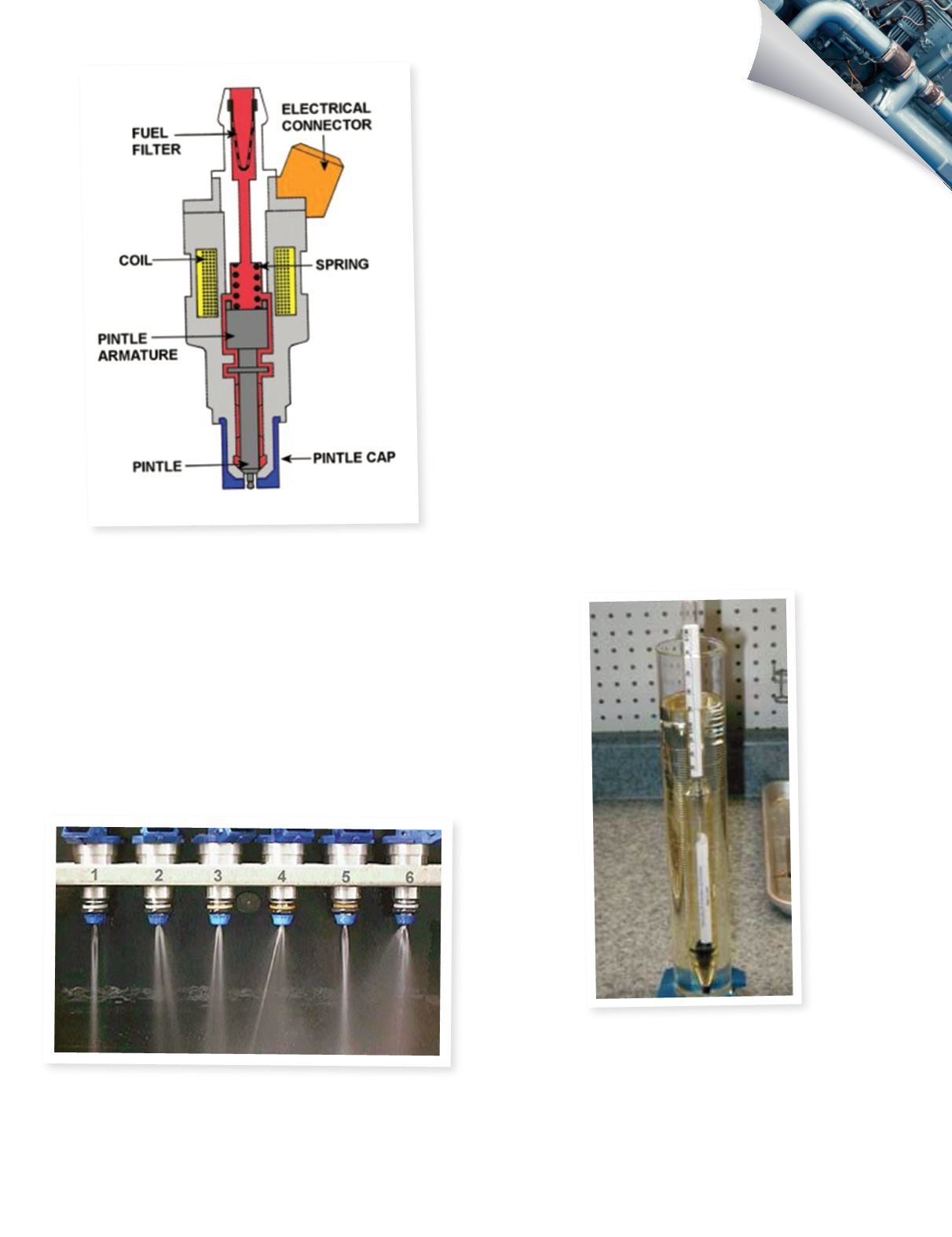
SPRING 2015 | MARINE TECHNICIANTODAY
21
fuel is delivered to the engine. For marine inboard and sterndrive engines,
the current evolution is GDI (gasoline direct injection). GDI engines will be
available this model year.
Even with the current technology and all the improvements in EFI systems,
fuel injectors can still have problems and fail. They are still electro-
mechanical devices, so either electrical or mechanical failures can occur.
Add on top of that contaminated fuel causing restrictions in the injector.
Some problems can be self-induced by technicians trying to service the
injectors. The fuel injector pintle is micro machined to provide the proper
spray patterns when the injector is open; it is easily damaged if dropped or
by trying to clean the tip with tools.
Even a well maintained EFI engine can have some problems. MPI engines
can have the lower injector seal O-rings become dried out, brittle, or broken
creating vacuum leaks. This will have a symptom similar to having a
restricted injector as the vacuum leak can
cause that effected cylinder to run lean. A
vacuum leak tester (used with the engine not running)
that injects smoke or vapor into the intake system can detect
this condition. Also (with the engine running) you can use propane
directed at pinpointed areas to monitor for any changes in engine RPM and
observe the engine for a smoother idle.
Marine engines can also suffer from problems created after being shut
down. They can be affected by heat soak and poor engine compartment
ventilation. To reduce noise, today’s boats have their engine compartment
better sealed and sound proofed, causing higher temperatures under the
engine hatch. Over time, this heat takes its toll on fuel injectors and their
sealing rings. Also the oversized plastic engine covers mounted on the flame
arrestor can make heat soak even worse. Today’s fuels can cause problems
for the fuel injection system itself. Modern fuels are a complex blend of
hydrocarbons and additives which can evaporate at different temperatures.
Each time the engine is shut down, heat soak will begin. A small amount of
fuel is left in the pintle area tip of each injector. The heat evaporates the more
volatile fuel compounds and the less volatile fuel compounds dry out forming
solids, causing deposits on the internal pintle area and on the injector tip.
Intake system and PCV design, poor injector ring seals, and bad valve guides
or seals, can also contribute to a buildup of deposits in the pintle area of the
fuel injectors. Supercharged engines often make fuel injector varnish and
carbon deposit matters even worse because of higher intake temperatures.
On average a 10% restriction in a fuel injector can cause a very poor spray
pattern resulting in poor fuel atomization and or lean running conditions.
Another big problem is the use of E-10 fuels. Water absorption into E-10 fuel
forms corrosive acids, and the drying characteristics of the alcohol itself
leads to internal corrosion of the fuel system over time. Dried deposits from
the alcohol form a white powder called aluminum oxide. This powder itself
causes restrictions in the fuel injectors.
u
Variations of poor fuel injector spray patterns
u
Specific gravity testing for flow test fluid
u
Internals of a Multi Port Injector


